
- Home
- India
- World
- Premium
- THE FEDERAL SPECIAL
- Analysis
- States
- Perspective
- Videos
- Sports
- Education
- Entertainment
- Elections
- Features
- Health
- Business
- Series
- In memoriam: Sheikh Mujibur Rahman
- Bishnoi's Men
- NEET TANGLE
- Economy Series
- Earth Day
- Kashmir’s Frozen Turbulence
- India@75
- The legend of Ramjanmabhoomi
- Liberalisation@30
- How to tame a dragon
- Celebrating biodiversity
- Farm Matters
- 50 days of solitude
- Bringing Migrants Home
- Budget 2020
- Jharkhand Votes
- The Federal Investigates
- The Federal Impact
- Vanishing Sand
- Gandhi @ 150
- Andhra Today
- Field report
- Operation Gulmarg
- Pandemic @1 Mn in India
- The Federal Year-End
- The Zero Year
- Science
- Brand studio
- Newsletter
- Elections 2024
- Events
- Home
- IndiaIndia
- World
- Analysis
- StatesStates
- PerspectivePerspective
- VideosVideos
- Sports
- Education
- Entertainment
- ElectionsElections
- Features
- Health
- BusinessBusiness
- Premium
- Loading...
Premium - Events
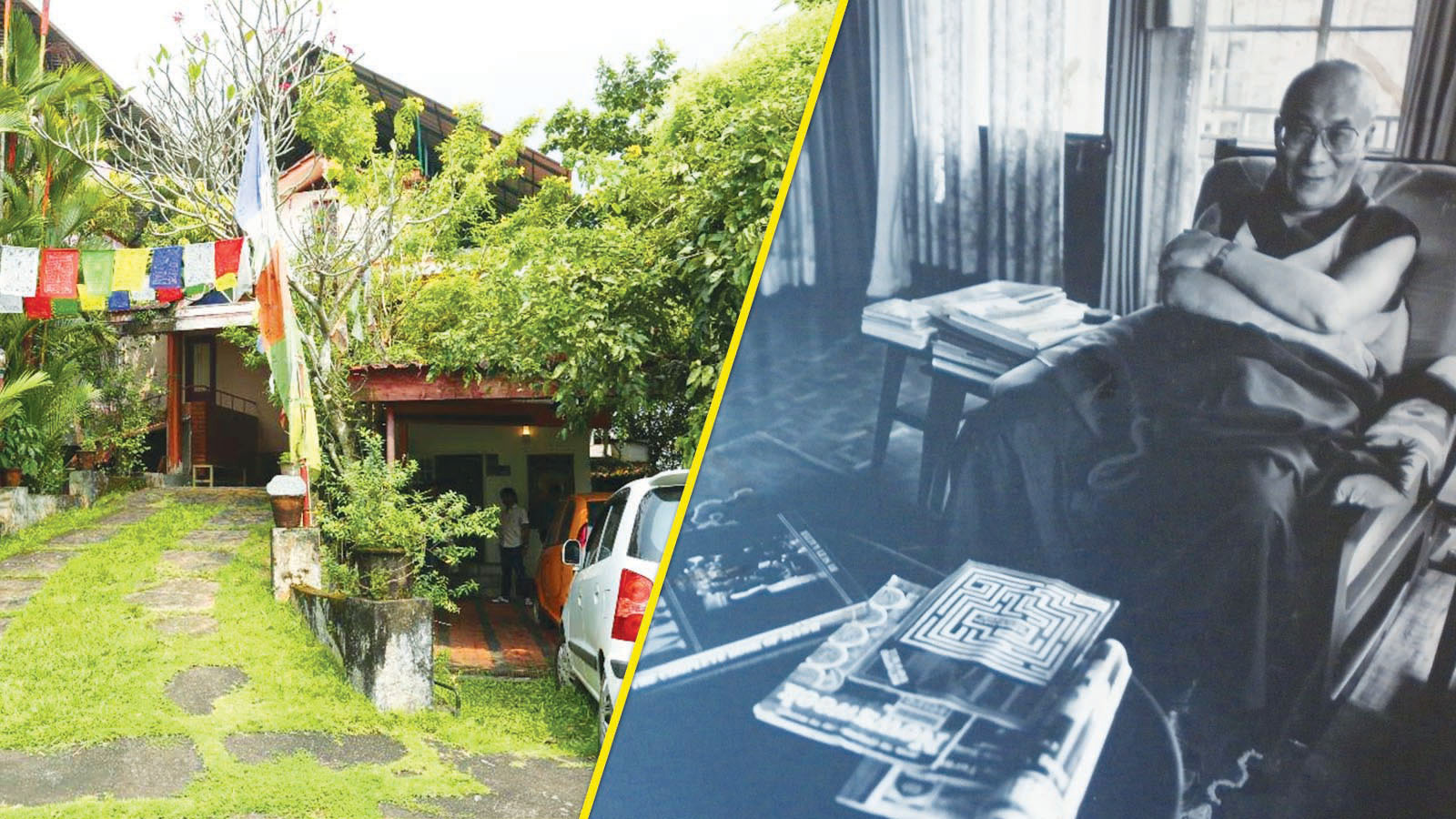
It is a cloudy afternoon. Panorama Nagar in Kochi is deserted as most people are spending the lazy Sunday enjoying their siesta. There are bungalows lining the road. Most houses adorn grassy lawns, gardens with roses, sunflowers, and marigolds, apart from mango and coconut trees. Silence abounds, broken only by the chirping of sparrows.In front of one bungalow, set at quite some distance from...
It is a cloudy afternoon. Panorama Nagar in Kochi is deserted as most people are spending the lazy Sunday enjoying their siesta. There are bungalows lining the road. Most houses adorn grassy lawns, gardens with roses, sunflowers, and marigolds, apart from mango and coconut trees. Silence abounds, broken only by the chirping of sparrows.
In front of one bungalow, set at quite some distance from the road, white, red, blue, green and orange pieces of cloth with inscription on them are fluttering from a wire. A closer look shows they are prayer flags.
Buddhist prayer flags dangling across a house in Kochi is not a common sight. The bungalow too is not a common house. It is a repository of the history of a nation and people uprooted from their homeland. The bungalow houses a museum dedicated to showcasing the struggles, life and times of the people of Tibet.
As one enters the Friends of Tibet Museum in Kochi, one comes across a Zenith Royal 1000-1 Wavemagnet Transistor Radio. The current Dalai Lama used it when he lived in the Potala Palace in Lhasa, the capital of Tibet and carried it with him when he fled to India in 1959 and established a government-in-exile in Mussoorie, in northern state of Uttarakhand. In 1960, when the government-in-exile shift to Dharamshala in Himachal Pradesh, the radio went along.
“The Zenith Corporation made it for the exclusive use of the Dalai Lama,” Sethu Das, the founder of the Friends of Tibet Foundation, told The Federal. “It was one of the most powerful radios built at that time.”
Sethu pulled out its very long antenna, saying, “This was how the Dalai Lama kept in touch with all the happenings in the world.”
On November 25, 2012, when the Dalai Lama visited Kochi, Sethu asked, “Your Holiness, do you remember this radio?”
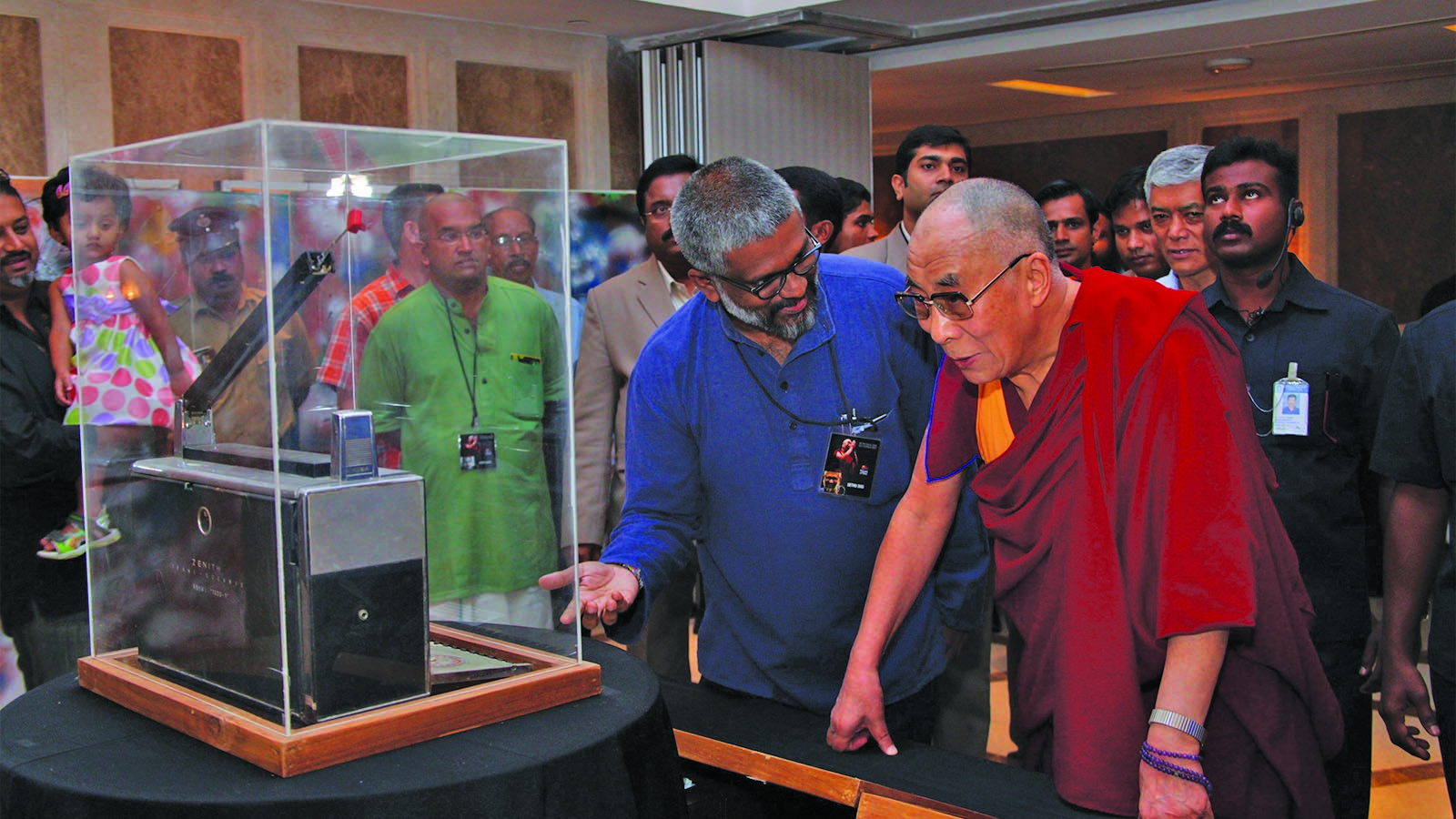
Sethu Das showing the 1000-1 Wavemagnet Transistor Radio to the Dalai Lama.
The Dalai Lama shook his head to signal that he did not.
“This is your radio,” Sethu said.
The Dalai Lama burst into laughter, as he hadn’t expected to see the radio at all, least of all in Kochi, thousands of kilometres away from Dharamshala. The Dalai Lama’s sister, Jetsun Pema, had gifted it to the Friends of Tibet several years ago.
On October 22, Tushar Gandhi, the great grandson of Mahatma Gandhi and a noted human rights activist, inaugurated the museum set up by Friends of Tibet.
“I feel nostalgic when I see the Dalai Lama’s radio. It reminds me of the clandestine radio broadcasts by courageous Congress worker Usha Mehta in Mumbai 75 years ago,” Tushar, who is an advisory board member of Friends of Tibet, which voices the Free Tibet movement, said.
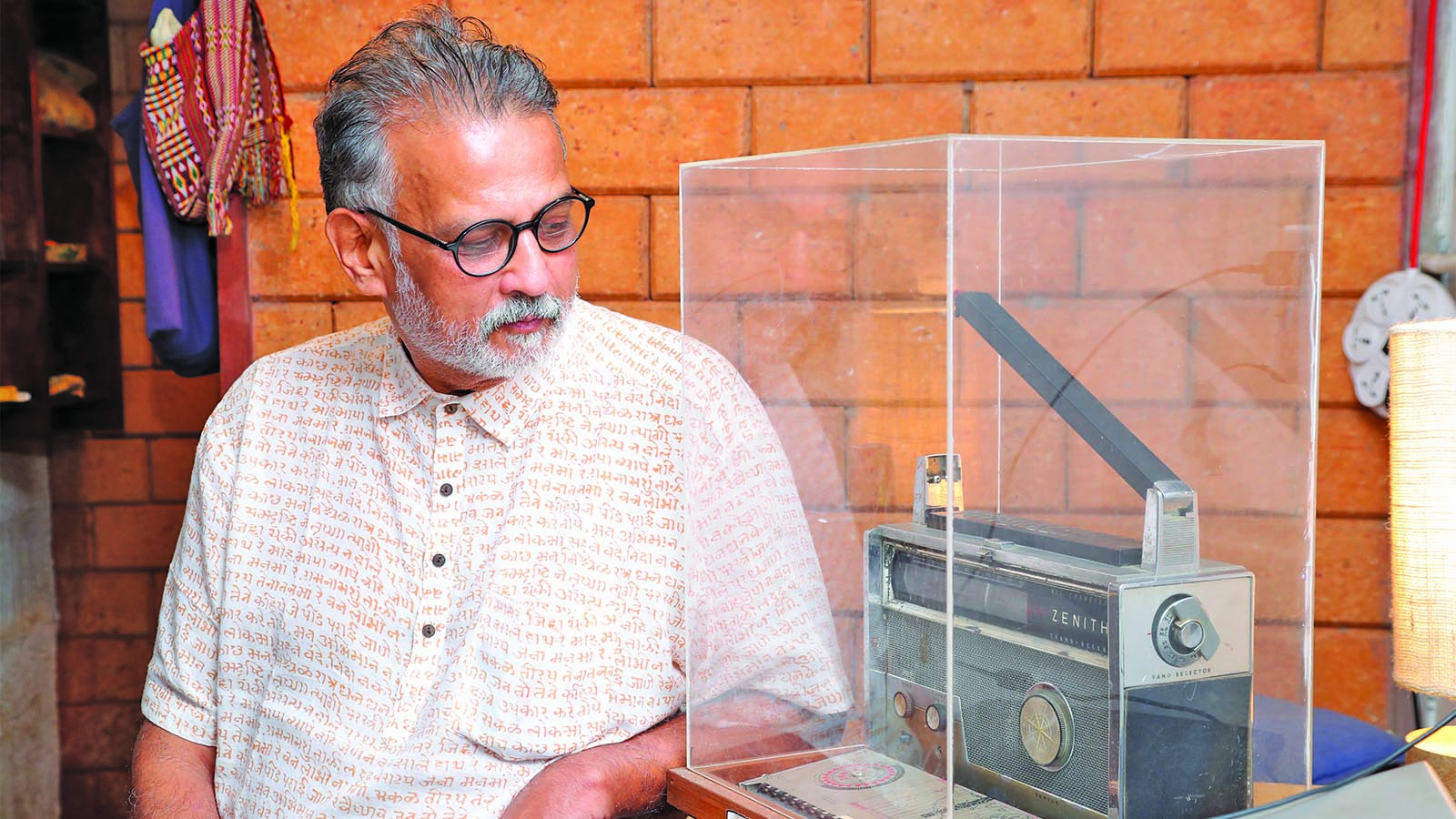
Tushar Gandhi at the Friends of Tibet Museum in Kochi.
Usha had set up the Secret Congress Radio, an underground radio station, which she used to broadcast the messages of the leaders, many of whom were in prison. The radio broadcasts worked for eight months during the Quit India Movement of 1942 towards mobilising the masses.
“Today, the Tibetan movement symbolises the battle of right against might,” said Tushar. “The world must sympathise with the Tibetan people. We Indians must make the battle to regain the homeland of Tibet for the Tibetans our own. We must help to achieve this dream during the lifetime of His Holiness The Dalai Lama. I affirm my solidarity with the people.”
The Chinese invaded and captured Tibet in 1950. Thousands of Tibetans died in the violence that ensued. Many fled, trekking through the Himalayas, and took refuge in India. Many, however, could never complete the arduous journey and died on the way due to the sub-zero temperatures and fatigue.
In 1959, the Tibetan spiritual and temporal leader the Dalai Lama sought political asylum in India. After India agreed to host him, he fled from Lhasa, the capital of Tibet, and trekked over the Himalayan mountain passes. According to government data, there are 85,000 Tibetans living in India today.
Housing history
At the museum, next to the radio, in a framed photo, are images of Tibetan currency. You can see currency in the form of 25 and 100 Sang notes that were in circulation till 1959.
In 1959, 10 years after the brutal invasion of Tibet by China, the Dalai Lama sought political asylum in India. He trekked over the Himalayan mountain passes and reached Mussoorie.
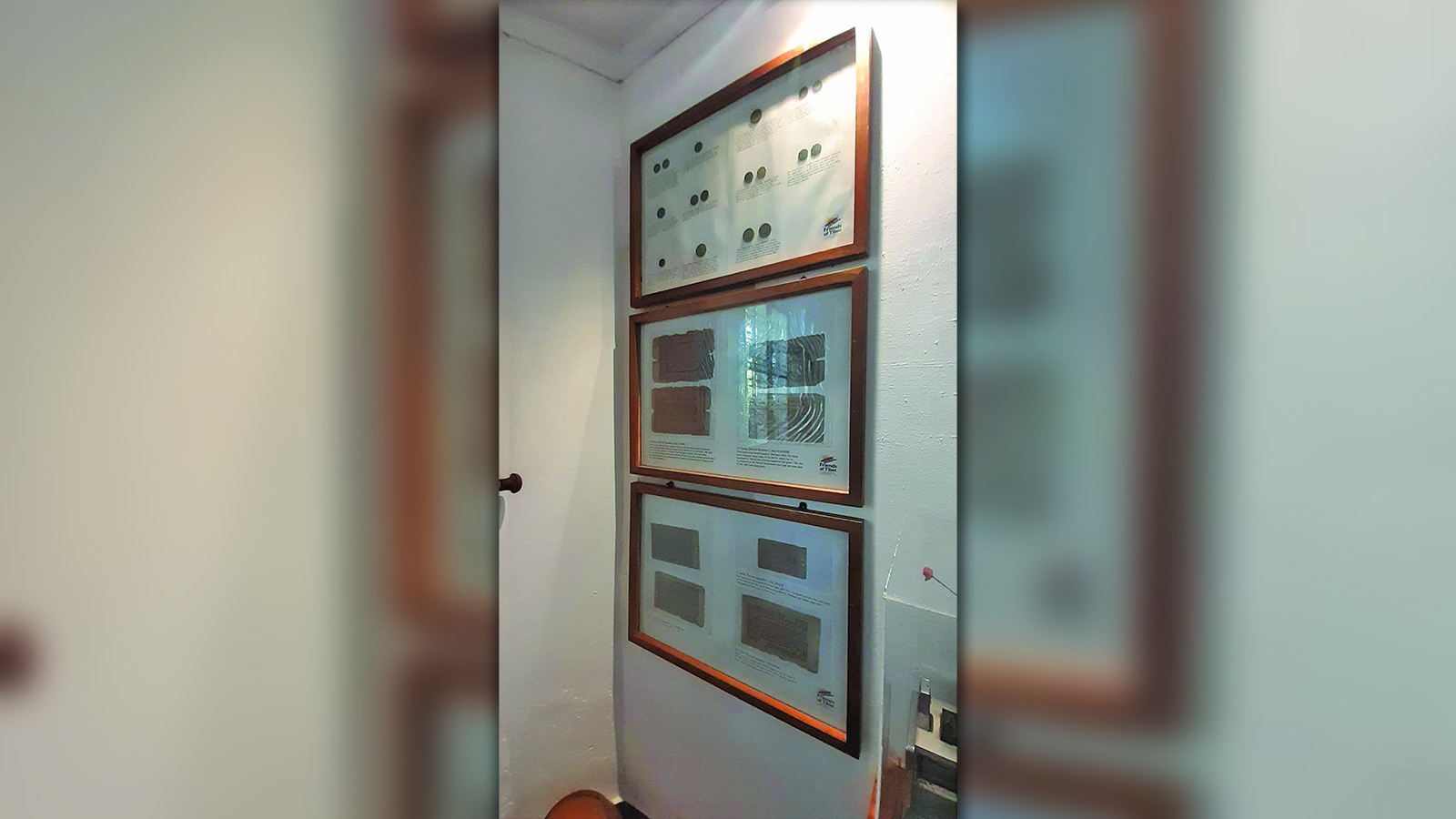
Tibetan currency on display at the museum.
There is a long-distance shot, by Jaqueline Meier of Switzerland, of the magnificent Potala Palace. This was the summer home of the Dalai Lama. It is located high up on the Red Hill. In the massive courtyard in front, there is a group of Chinese police officers standing around. This is a stark reminder of the invasion. Thousands of Tibetans died at the hands of the Chinese troops.
In another image, taken by Angel Lopez Soto from Spain, a father, mother and 12-year-old son are shown at the Tibetan Refugee Reception Centre in Kathmandu, Nepal, after trekking over the Himalayas.
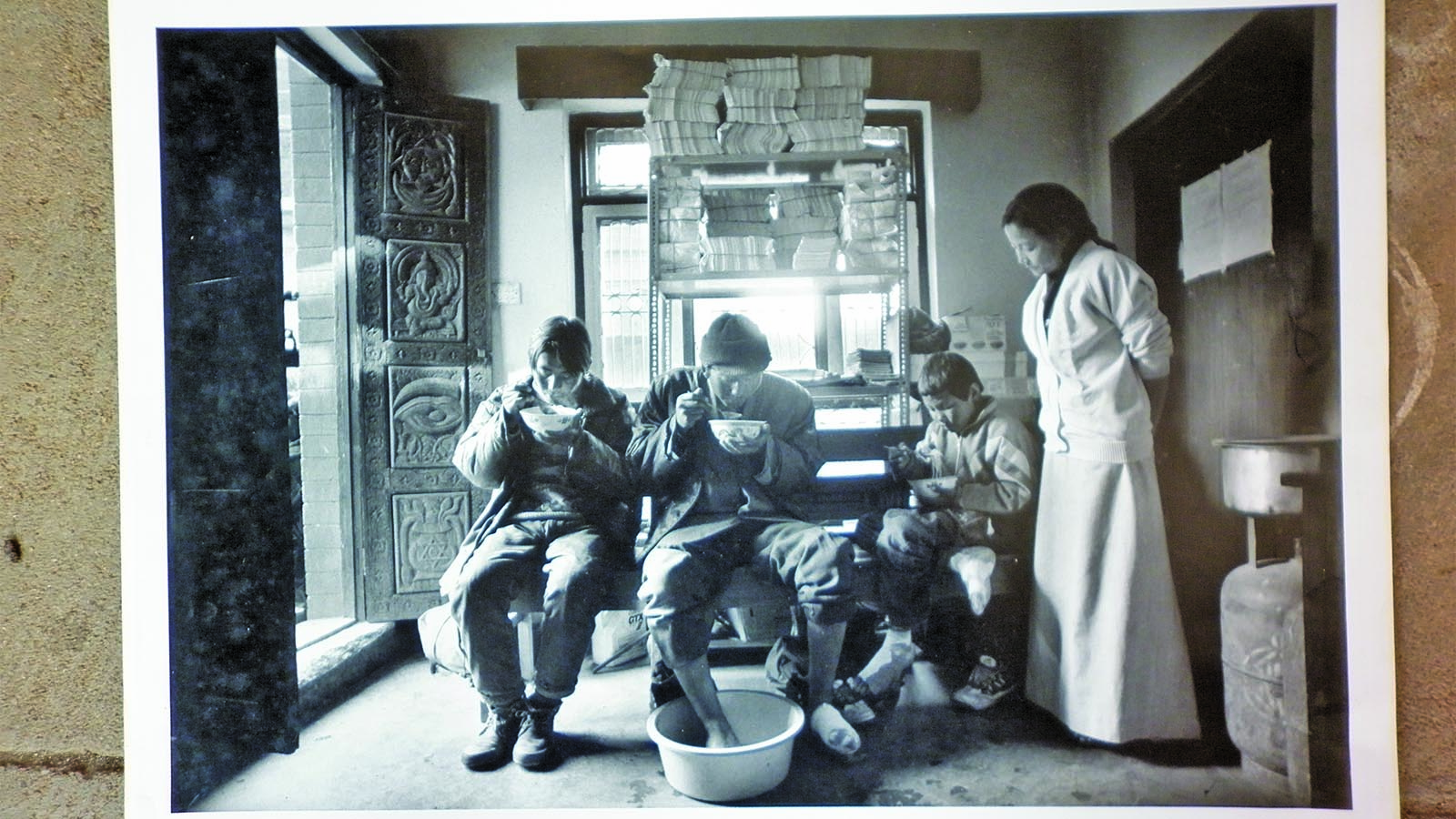
Angel Lopez Soto's photo of a Tibetan refugee family.
They are sitting on a bench and having soup, their eyes bent downwards towards the bowls. They looked weather-bitten and hungry. The father has placed his foot in a basin of warm water. “He may have suffered frostbite,” said Sethu, adding, “This is a scene from the 1960s.” A young woman, in a white top and floor-length skirt, stood on one side and watched them with a solicitous look on her face.
On another wall hangs a thangka, a Tibetan Buddhist painting on cloth. It depicts Lord Buddha sitting crossed-legged on a lotus. “They make the paints from natural plants,” said musician Nirmal Anthony, a member of the Friends of Tibet. “The lotus is a flower that grows in the mud but is untouched by it. Buddha’s message is: “You should live in the world but remain unaffected by its vicissitudes.” The thousand-petalled lotus symbolises the enlightened state of human consciousness.
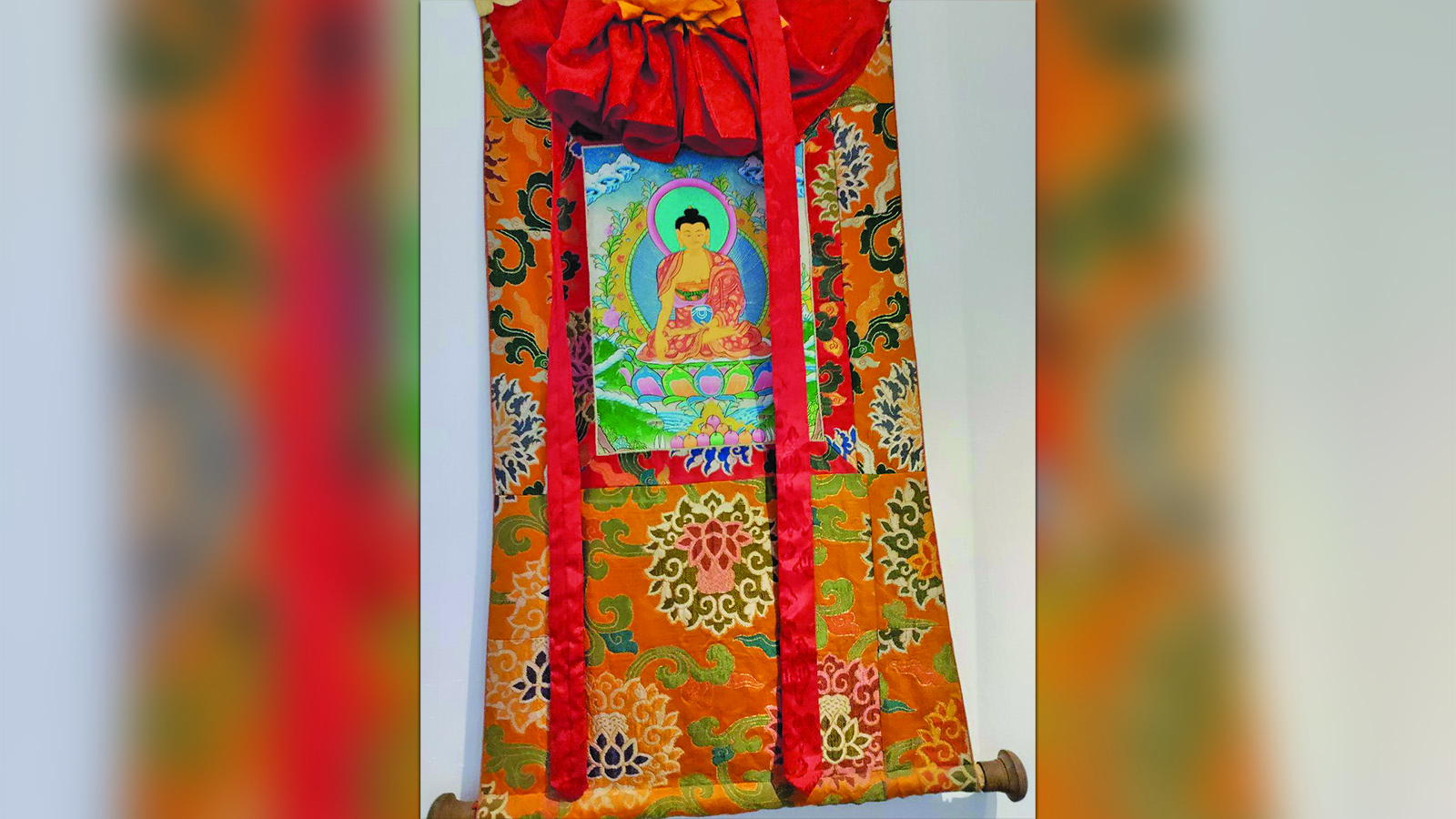
A thangka painting.
There is also a photo, taken by Mumbai-based photographer Suresh Natarajan, of a smiling Dalai Lama, sitting on an armchair in his office in Dharamshala. The Dalai Lama radiates positive energy because of his twinkling eyes. He looks to be in his fifties in the photo. A copy of the American magazine, Newsweek, is lying on a low table in front of him.
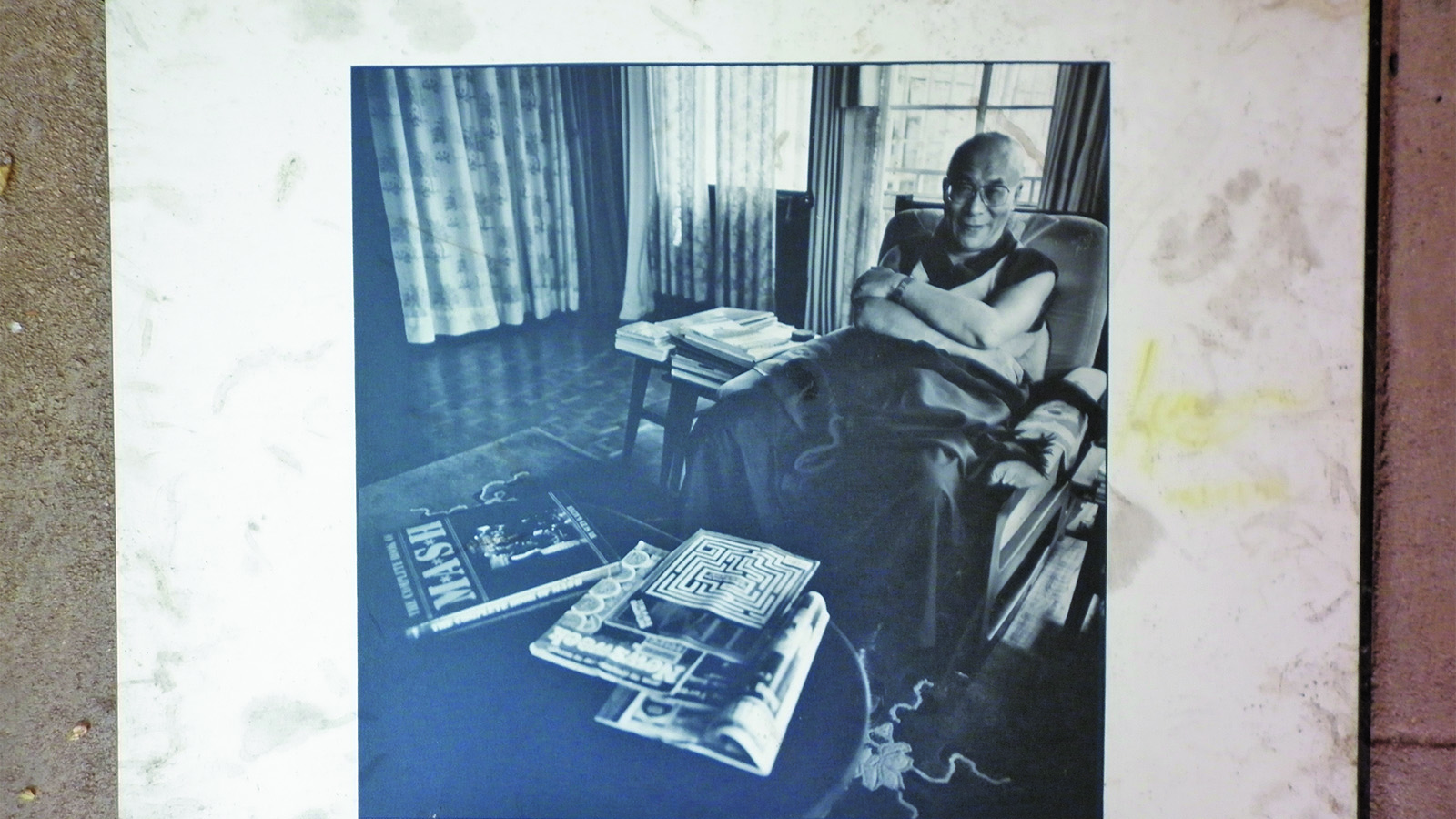
Suresh Natarajan's photo of showing a relaxed Dalai Lama.
Other photos show the vistas of the Tibetan landscape with its blue skies and high mountain ranges.
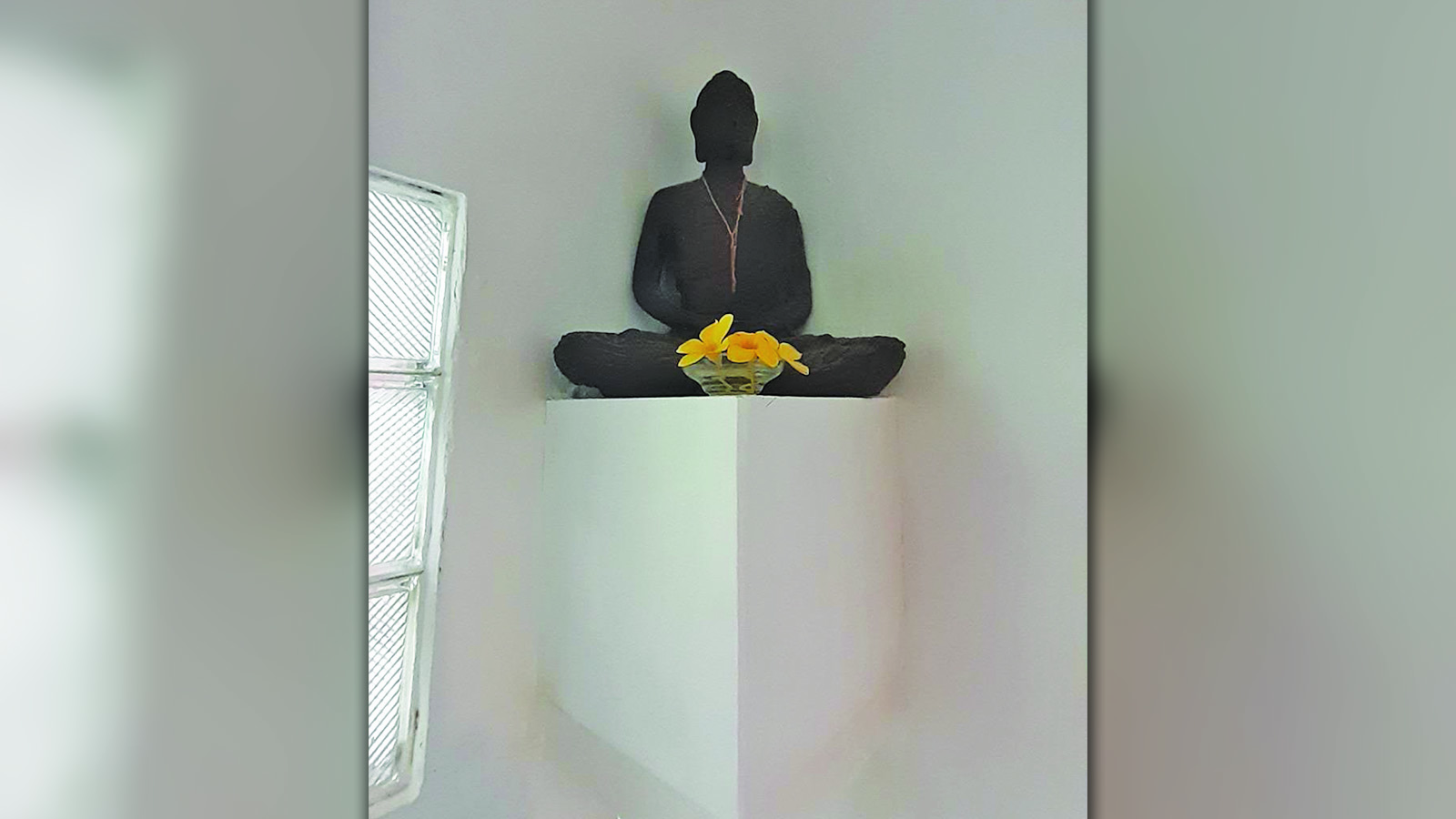
An idol of Lord Buddha.
Some items have been placed on a table. These include the first Tibetan passport used by finance secretary Tsepong Wangchuk Dedhen Shakabpa; the 1934 September edition of the National Geographic magazine carrying the image of the Tibetan National Flag in the ‘National Flags of the World’; Chinese Communist Party chairman Mao’s ‘Little Red Book’, and a uniform worn by the Chinese soldiers during the invasion of Tibet.
A visitor’s view
Sudheer Nath is a Delhi-based journalist-cum-cartoonist. Once or twice a month, he comes to Kerala to visit his family. Last week, he dropped in to visit the museum in Kochi.
“If you visit the museum without knowing the history of Tibet, you will not get an idea of the pain and despair behind the photos,” he said. “It will be ordinary photos for those who are ignorant. But for me, it was a deeply moving experience.”
Sudheer has been a keen follower of the Tibetan issue for 25 years and has attended many functions of the Friends of Tibet. He has visited the Tibetan refugee colony, named Majnu Ka Tilla, near Kashmere Gate in Delhi. “I am a supporter of Tibetan independence,” he said.
The Kerala museum, meanwhile, also houses a library with hundreds of books about Tibet. One can find A Journey in Ladakh: Encounters with Buddhism by spiritual teacher Andrew Harvey; Tibet: Reports from Exile by Tibetan author Thupten Samphel, and The Definitive Account of the Dalai Lama and Tibet written by American journalist John F Avedon. There is also a book by the Dalai Lama, called Awakening the mind: Lightening the heart.
Attracted to Tibet
Sethu was working as a graphic designer with The Economic Times in Mumbai. During a vacation, he landed in Dharamshala with a photographer friend. That was when he encountered Tibetan monks with their distinctive maroon cloaks. He got curious and interviewed the monks to know more about them.
When some of them refused to speak, he realised later the Chinese had cut off their tongues. “The incident pinched my heart and I discovered my life’s work and passion in Dharamshala,” he said. Soon, Sethu gave up his job.
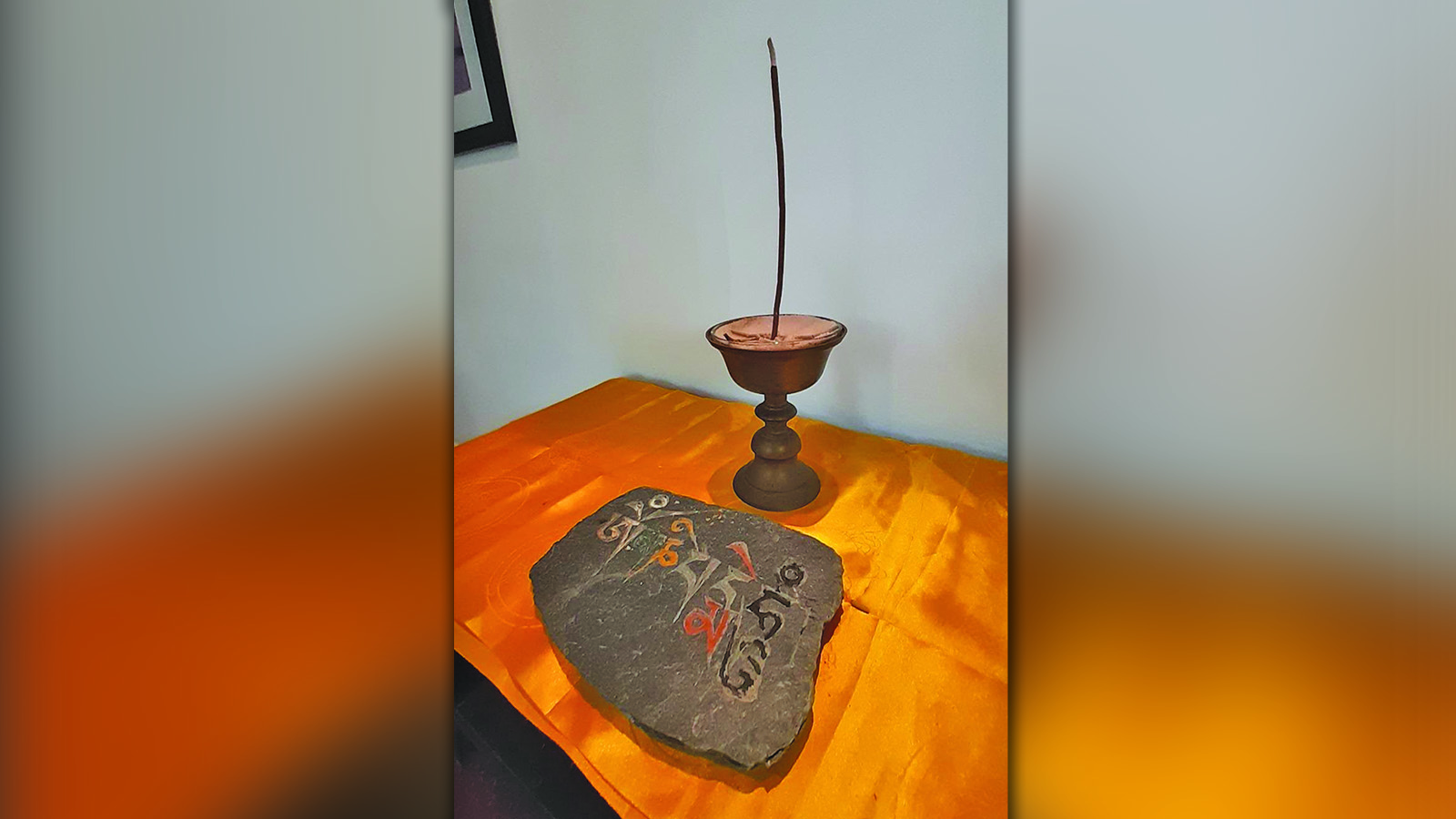
A Tibetan butter lamp with a rock slate on display with Om Mani Padme Hum (praise to the jewel in the lotus) written on it.
In 1999, Sethu set up the Friends of Tibet in Mumbai. The same year, he set up the Friends of Tibet Foundation in his hometown of Kochi.
The Foundation works to safeguard and advance Tibetan culture, history and heritage.
“We are conducting research on the unique heritage, legacy and history of Tibet,” said Sethu. The Foundation works with scholars, scientists, health experts, and sociologists to publish research papers.
During the Kochi International Art Biennale, in December, 2022, the Foundation set up ‘Shadow Circus: A Personal Archive of Tibetan Resistance (1957-74)’. Activist film-makers Ritu Sarin and Tenzing Sonam curated it.
“The Friends of Tibet are doing wonderful work, mainly in South India and Mumbai,” said Karma Yeshi, former finance minister of the Tibetan Government in Exile.
“They have made the people aware of the sufferings of the Tibetan people,” he said.
“All this has happened because of the immense dedication and sincerity of Sethu and his team, Suku, his brother, and their father CJ Yesudasan (1938-2021), one of Kerala's well-known cartoonists. Because of them, many other people have joined the group. All of them have been sincere towards the cause of Tibet.”

